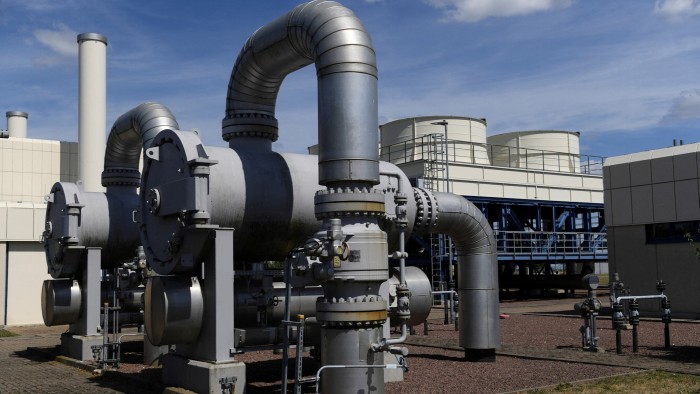Unlock the Editor’s Digest for free
Roula Khalaf, Editor of the FT, selects her favourite stories in this weekly newsletter.
The EU is emptying its gas storage facilities at the fastest pace since the energy crisis three years ago as colder weather and a decline in seaborne imports raise demand.
The volume of gas in the bloc’s storage sites has dropped about 19 per cent from the end of September, when the refilling season ends in gas markets, to mid-December, according to data from Gas Infrastructure Europe, an industry body.
The previous two years only saw single-digit drops over the same period, when higher than normal temperatures ensured that storage remained relatively full well into the winter heating season, and industries curbed demand due to higher prices.
“Europe has had to rely much more on its underground stores so far this winter than in the past two years to make up for lower liquefied natural gas imports and to meet stronger demand,” said Natasha Fielding, head of European gas pricing at Argus Media, a pricing agency.
Europe has also faced more competition for LNG imports from Asian buyers, who have been drawn by prices that are lower than in recent years. That has led to a slowdown in imports and the need to draw more on the stored reserves.
The last time the continent’s gas stores were emptied this fast by mid-December was in 2021, when Russia began cutting pipeline gas supplies ahead of its full-scale invasion of Ukraine.
The EU’s storage levels are now at 75 per cent, marginally above the average of the previous 10 years, before western European governments began trying to lessen their dependence on Russian imports. Storage levels were close to 90 per cent as of mid-December last year.
European gas prices are about 90 per cent below the above-€300 per megawatt hour seen during the energy crisis in the summer of 2022. However, emptying storage facilities during the winter could make refilling harder and more expensive next year.
Traders are already trading gas for delivery next summer at a higher price than for delivery in the winter that follows, a sign of the increasingly steep cost of replenishing stockpiles.
EU countries need to fill their storage to 90 per cent of capacity by the start of November under the European Commission’s mandatory refilling target, although some countries have lower targets.
A significant portion of its gas supplies now comes in the form of LNG, which has become increasingly politicised in recent weeks. US president-elect Donald Trump has warned the EU that it must commit to buying “large scale” amounts of US oil and gas or face tariffs, while Qatar has threatened to stop its LNG shipments if member states strictly enforce new legislation that will penalise companies which fail to meet set criteria on carbon emissions, human and labour rights.
The US is the largest supplier of LNG to the EU, and Qatar the third largest.
Another reason for the fast withdrawal was due to Europe experiencing spells of colder weather, as well as the so-called Dunkelflaute — days when neither solar panels nor wind turbines generate any power — which increased gas demand for power generation.
Demand for industrial gas in nine north-west European countries this year has “recovered from the lows of 2023“, rising 6 per cent on the year for January to November, according to Anne-Sophie Corbeau, global research scholar at the Center on Global Energy Policy at Columbia University.
Some countries have depleted their stocks faster than others. The Netherlands saw a 33 per cent drop in gas volumes stored since the start of winter, while France saw a 28 per cent fall.
Russian gas that flows through Ukraine to Europe is also expected to stop at the end of next year as a transit deal expires. The route accounts for about 5 per cent of the EU’s gas imports.
“There doesn’t seem to be a major concern” around the potential halt of Russian gas through Ukraine, said Andreas Guth, secretary-general of Eurogas, an industry body. “That being said . . . every marginal volume [of gas] is of course going to make a difference in the filling season.”
Read the full article here




